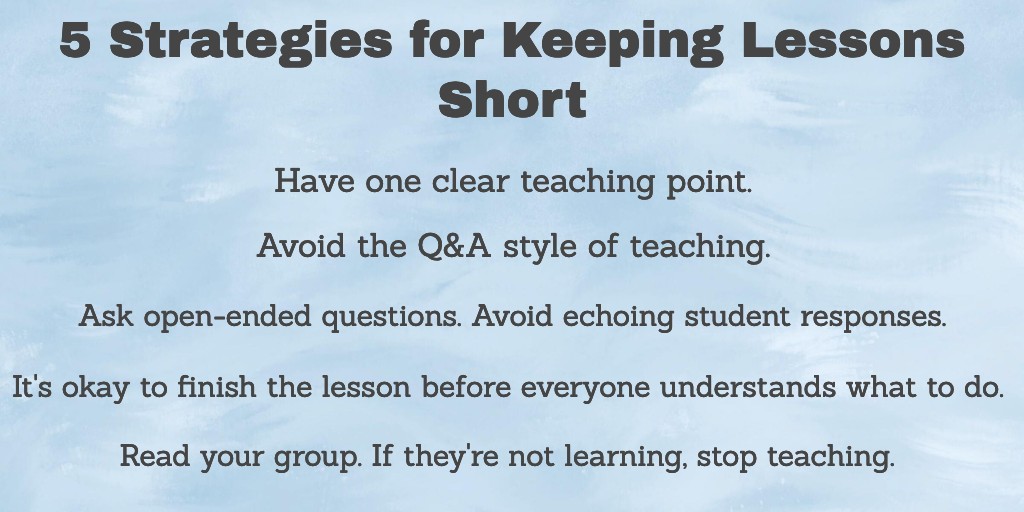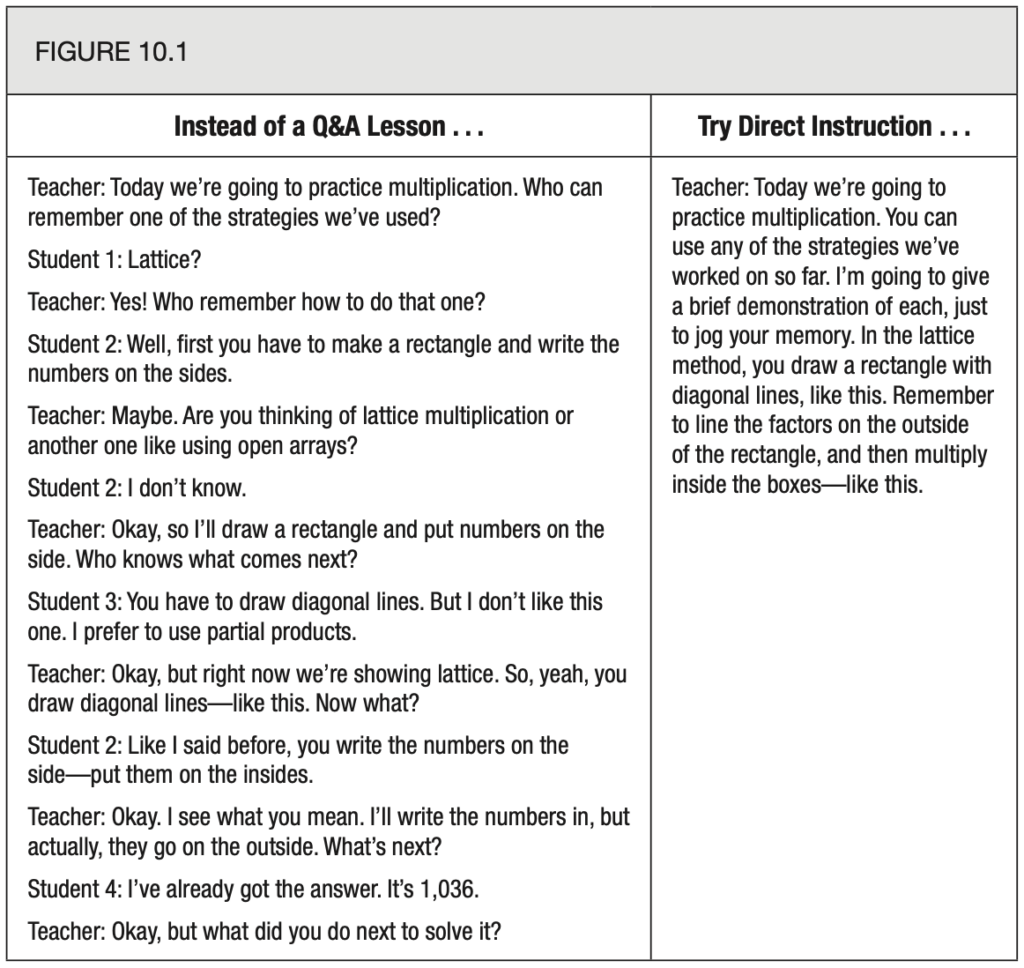5 Strategies for Keeping Lessons Short

A friend and colleague of mine, Andy Dousis, once told me that every lesson has three moments: a golden one, a silver one, and a leaden one. Whatever you say in the first 60 seconds of the lesson is the golden moment. Whatever you say in the last 30 seconds is the silver moment. Everything in between is the leaden moment. We all know the truth of this. Long lessons are engagement killers in the classroom. Students need to do to really learn, so lessons should be short to maximize student work time. With that in mind, here are 5 strategies for keeping lessons short so student engagement can stay high.
Strategy #1: Have one clear teaching point.
What’s the goal of the lesson? Are you showing a new revision strategy in writing? Demonstrating a new algorithm in math? Modeling a phonemic skill? Describing the inquiry challenge of a science lab? Be clear. Be succinct. And stick with that one goal.
If there’s too much to teach in one lesson, consider breaking it in two (or three!). Teach one short lesson and give students time to discuss, practice, or get started on a challenge. Then, call everyone back together for a short second lesson.
Strategy #2: Avoid the Q&A style of teaching.
In a well intentioned effort to involve students in lessons, we may use the question and answer style of teaching. This is where we ask students questions to try to get them to fill in information we’re trying to teach. We try to drag information out of students via a class “discussion.” I place that word in quotes because it’s not really a discussion. It’s actually the “Guess What the Teacher’s Thinking Game,” and it’s not fun. Typically, one of two things happens.
Either, students don’t respond at all, leaving you to answer your own questions. (Remember this class scene from Ferris Bueller’s Day Off?)
Or, students try to answer your questions, but there are incorrect responses or side comments, which slow down the lesson and muddy the waters. Students end up lost as they try to sort out what they’re actually supposed to be listening to. According to John Hattie’s incredible meta-analysis work, teacher clarity is one of the most powerful teaching practices out there with an effect size of more than twice his recommend “hinge point” effect size of .40. Quite simply, when kids know what they’re learning and why it’s important, they learn more–something often lost in the Q&A style of teaching.
In the following example, from What We Say and How We Say It Matter, you can see an example of what to do instead. If there’s something you want everyone to know or understand, just tell them. Notice how much shorter and more direct the second example is.
Strategy #3: Ask open-ended questions. Don’t echo student responses.
Avoiding the Q & A style of teaching doesn’t mean we shouldn’t ask questions as we teach. Instead of asking questions with factual responses, pose open-ended questions to help students process content and to boost participation and engagement. For example, to continue the previous example, you might ask students, “So far, we have learned a few multiplication strategies. Which do you prefer, and why?”
You might have students discuss this with a partner, or you might have a few share responses with the group. If you do, avoid echoing their responses. For example, a student responds, “I like the lattice method better because I like how the numbers all line up.” Instead of echoing them (“You like lattice better because you like how the numbers line up.”), nod to show you were listening and have another student share. Not only will this save time (since you’re not repeating everything students say) but you encourage students to listen to each other. You give their words more power and meaning when you let students’ voices shine.
Strategy #4: It’s okay to finish the lesson before everyone understands what to do.
If you’re teaching a lesson to a group of students—either a small strategy group or the whole class—you know everyone won’t understand everything you’re teaching at the same time. This is one of the inherent inefficiencies of teaching a whole group. Some get it right away and some will need some extra examples or explanation. When we keep teaching, trying to help everyone understand something before we move on, the kids who are ready to move on disengage—bored and frustrated that they have to keep sitting and listening.
Once many students seem ready to move on to the more active portion of class (practicing examples, moving forward with the lab, continuing to write rough drafts, etc.), end the lesson. You might invite students who want some more explanation to continue for a few more minutes, or you might move in quickly to support them as they get started. The shorter your lesson is, the more time you’ll have to coach individual students or pull teach strategy group sessions.
Strategy #5: Read your group. If they’re not learning, stop teaching.
We’ve all (at least I know I have) gone on too long. We’re still teaching, but kids aren’t learning. Make sure to pay attention to your students. If they’re starting to look like this meerkat, stop the lesson.
It’s time to get moving. Let students get to work.
What are some other strategies that you’d add to this list? How else can we make sure to keep lessons short to help maximize student engagement?
Keep lessons short. Sometimes the less we say, the more kids learn.
Mike Anderson Tweet
Author
-
Mike Anderson has been an educator for many years. A public school teacher for 15 years, he has also taught preschool, coached swim teams, and taught university graduate level classes. He now works as a consultant providing professional learning for teachers throughout the US and beyond. In 2004, Mike was awarded a national Milken Educator Award, and in 2005 he was a finalist for NH Teacher of the Year. In 2020, he was awarded the Outstanding Educational Leader Award by NHASCD for his work as a consultant. A best-selling author, Mike has written ten books about great teaching and learning. His latest book is Rekindle Your Professional Fire: Powerful Habits for Becoming a More Well-Balanced Teacher. When not working, Mike can be found hanging with his family, tending his perennial gardens, and searching for new running routes around his home in Durham, NH.
- Share:
You may also like

The Perfect Breakfast for Teachers
- February 11, 2025
- by Mike Anderson
- in Blog

Finding Time for a One-on-One Problem-Solving Conference



